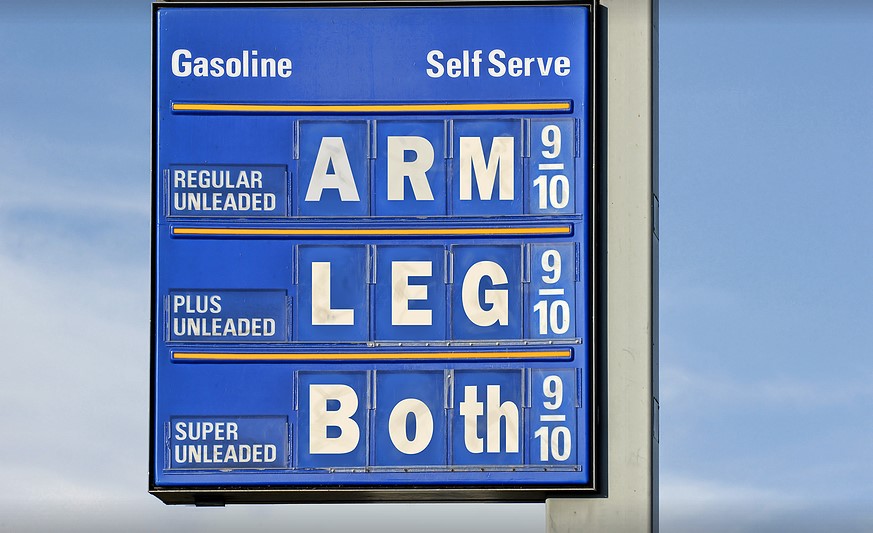Thinking of a Staycation? Here’s What the Delaware Valley Has to Offer

As gas prices continue to hit record highs and sky-high airfares remain elevated, staycations are becoming an attractive summer vacation option for many Pennsylvanians.
Fifty-three percent of Americans say the price of gas will limit their travel plans, according to a survey by Harvest Hosts released in early May. That figure was especially high with older travelers. A Rasmussen Reports survey released last week also revealed 57 percent said gas prices are affecting their vacation travels.
If residents do choose a staycation, they would join a trend of more residents staying local for travel in recent years, local tourism officials said.
Rachel Riley, assistant vice president of communications at the Valley Forge Tourism & Convention Board, said the pandemic already has been increasing the number of staycations.
“During 2020, you could only really go local,” she said.
That trend is still elevated, Riley added. She says she thinks that is because people are now interested in exploring their backyard.
President and COO of Visit Bucks County Paul Bencivengo said despite increased interest in locals’ own neighborhoods, there is still more to see.
“I guarantee, there’s a new shop, bakery, something to do, that you haven’t seen before,” he said. “A lot of our partners used (COVID) to maybe do some upgrades, as well as even bring new programming onboard, and new exhibits.”
Nina Kelly, director of marketing and communications for the Chester County Conference and Visitors Bureau, suggested visiting lesser-known gems throughout the region.
“A lot of people don’t know all of greater Philadelphia is America’s Garden Capital,” she said. “There are a lot more gardens than just Longwood.”
With more than 30 gardens within 30 miles of the city, Kelly said visitors can feel a world away from home.
Other suggestions for activities in Chester County include visiting Baldwin’s Book Barn, a five-story bookstore home to more than 300,000 texts. Or travel over to West Chester to experience the American Helicopter Museum & Education Center, one of the few museums in the country dedicated to rotary flight.
Kelly also thinks the Brandywine River Museum of Art, featuring Wyeth family works, is a must-see for residents who want to understand the rich history the area has and don’t want to take it for granted.
For perfect family activities, Riley suggested the Elmwood Park Zoo, Legoland Discovery Center in Plymouth Meeting, and Arnold’s Family Fun Center in Oaks just to name a few. With the King of Prussia Mall, Philadelphia Outlets, and many main street business destinations across the area, there is no shortage of shopping options.
Riley added a summer savings pass is available for download for consumers to get exclusive savings at participating restaurants and attractions. There is also Crave Montco Month all of July, which Riley described as “restaurant week on steroids.”
And if you want to make it a real getaway, Riley said Montgomery County has 80 first-class hotels.
Bencivengo said residents can visit Upper Bucks for more outdoor activities, like at Lake Nockamixon, Ringing Rocks Park, and Van Sant Airport. Plus, there is access to main streets like Quakertown’s to satisfy consumer needs.
In Lower Bucks, visit the estate of William Penn at Pennsbury Manor, or see a show at the Bucks County Playhouse or Bristol Riverside Theater. Sesame Place is perfect for the family, while adults may prefer to explore the wide variety of wineries, distilleries, and breweries throughout the county.
And whether you prefer commercial options or boutique hotels and bed and breakfasts, there are a plethora of places to stay overnight.
By staying close to home, all three officials added you are not just saving money out of your own pocket, you are also helping local and typically small businesses survive. And with so much to offer, they think doing so is the perfect summer plan.
“This is affordable,” Riley said about vacationing in the area. “It’s a great location, easy to get to, but still tons of quality.”
Please follow DVJournal on social media: Twitter@DVJournal or Facebook.com/DelawareValleyJournal





